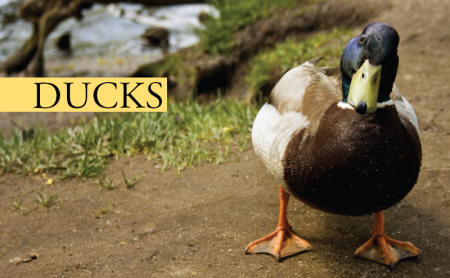
Ducks tend to be somewhat more difficult than chicks to raise, but they do provide wonderful eggs and meat. Ducks tend to have pleasanter personalities than chickens and are often prolific layers. The eggs taste similar to chicken eggs, but are usually larger and have a slightly richer flavor. Ducks are happiest and healthiest when they have access to a pool or pond to paddle around in and when they have several other ducks to keep them company.
Breeds of Ducks
There are six common breeds of ducks: White Pekin, White Aylesbury, Colored Rouen, Black Cayuga, Colored Muscovy, and White Muscovy. Each breed is unique and has its own advantages and disadvantages.
1. White Pekin—The most popular breed of duck, these are also the easiest to raise. These ducks are hardy and do well in close confinement. They are timid and must be handled carefully. Their large frame gives them lots of meat and they are also prolific layers.
2. White Aylesbury—This breed is similar to the Pekin but the plumage is much whiter and they are a bit heavier than the former. They are not as popular in the United states as the White Pekin duck.
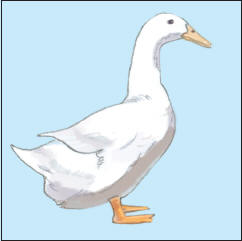
White Pekins were originally bred from the Mallard in
China and came to the United States in 1873.
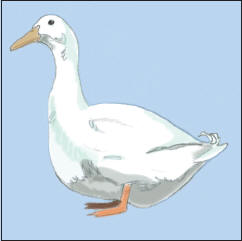
According to Mrs. Beeton in her Book of Household Management, published in 1861, “[Aylesbury ducks’] snowy plumage and comfortable comportment make it a credit to the poultry-yard, while its broad and deep breast, and its ample back, convey the assurance that your satisfaction will not cease at its death.”
3. Colored Rouens—These darkly plumed ducks are also quite popular and fatten easily for meat purposes.
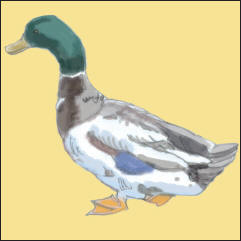
Colored Rouen
4. Black Cayuga and muscovy breeds—These are American breeds that are easily raised but are not as productive as the White Pekin.
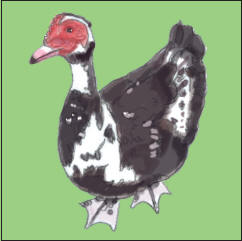
Black Cayuga
Housing Ducks
You don’t need a lot of space in which to raise ducks—nor do you need water to raise them successfully, though they will be happier if you can provide at least a small pool of water for them to bathe and paddle around in. Housing for ducks is relatively simple. The houses do not have to be as warm or dry as for chickens but the ducks cannot be confined for as long periods as chickens can. They need more exercise out of doors in order to be healthy and to produce more eggs. A house that is protected from dampness or excess rain water and that has straw or hay covering the floor is adequate for ducks. If you want to keep your ducks somewhat confined, a small fence about 2 ½ feet high will do the trick. Ducks don’t require nesting boxes, as they lay their eggs on the floor of the house or in the yard around the house.
Feeding and Watering Ducks
Ducks require plenty of fresh water to drink, as they have to drink regularly while eating. Ducks eat both vegetable and animal foods. If allowed to roam free and to find their own food stuff, ducks will eat grasses, small fish, and water insects (if streams or ponds are provided).
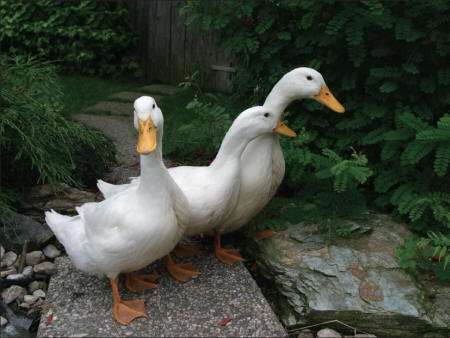
Ducks need their food to be soft and mushy in order for them to digest it. Ducklings should be fed equal parts corn meal, wheat bran, and flour for the first week of life. Then, for the next 50 days or so, the ducklings should be fed the above mixture in addition to a little grit or sand and some green foods (green rye, oats, clover) all mixed together. After this time, ducks should be fed on a mixture of two parts cornmeal, one part wheat bran, one part flour, some coarse sand, and green foods.
Hatching Ducklings
The natural process of incubation (hatching ducklings underneath a hen) is the preferred method of hatching ducklings. It is important to take good care of the setting hen. Feed her whole corn mixed with green food, grit, and fresh water. Placing the feed and water just in front of the nest for the first few days will encourage the hen to eat and drink without leaving the nest. Hens will typically lay their eggs on the ground, in straw or hay that is provided for them. Make sure to clean the houses and pens often so the laying ducks have clean areas in which to incubate their eggs.
Caring for Ducklings
Young ducklings are very susceptible to atmospheric changes. They must be kept warm and free from getting chilled. The ducklings are most vulnerable during the first three weeks of life; after that time, they are more likely to thrive to adulthood. Construct brooders for the young ducklings and keep them very warm by hanging strips of cloth over the door cracks. After three weeks in the warm brooder, move the ducklings to a cold brooder as they can now withstand fluctuating temperatures.
A Muscovy duck with her ducklings.
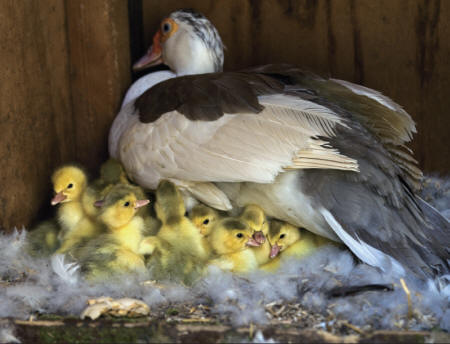
Common Diseases
On a whole, ducks are not as prone to the typical poultry diseases, and many of the diseases they do contract can be prevented by making sure the ducks have a clean environment in which to live (by cleaning out their houses, providing fresh drinking water, and so on).
Two common diseases found in ducks are botulism and maggots. Botulism causes the duck’s neck to go limp, making it difficult or even impossible for the duck to swallow. Maggots infest the ducks if they do not have any clean water in which to bathe, and are typically contracted in the hot summer months. Both of these diseases (as well as worms and mites) can be cured with the proper care, medications, and veterinary assistance.